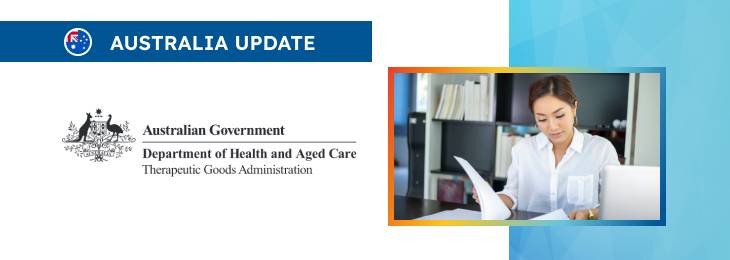The article overviews the legal framework for medical device systems and procedure packs intended to be marketed and used in Australia.

Table of content
The Therapeutic Good Administration (TGA), an Australian regulating authority in healthcare products, has published a guidance document dedicated to the medical device systems and procedures packs intended to be marketed and used in the country.
The document provides an overview of the applicable regulatory requirements and additional clarifications and recommendations to be considered by medical device manufacturers and other parties involved to ensure compliance.
At the same time, provisions of the guidance are non-binding in their legal nature, nor are they intended to introduce new rules or impose new obligations.
The authority also reserves the right to make changes to the guidance, should such changes be reasonably necessary to reflect corresponding amendments to the underlying legislation.
Regulatory Background
To assist the parties involved with ensuring compliance with the regulatory requirements set forth under the existing legal framework, the TGA has introduced specific guidelines for System or Procedure Packs (SOPPs), describing the amendments effective 25 November 2021.
The authority explains that the applicable regulations require that SOPPs, defined under the Therapeutic Goods Act of 1989, comply with new conformity assessment procedures to ensure safety and performance. SOPPs, which are combinations of medical devices and other goods intended for medical or surgical use, now require inclusion in the Australian Register of Therapeutic Goods (ARTG) as distinct medical devices.
According to the guidance, manufacturers of SOPPs can follow one of the two pathways for demonstrating conformity to regulatory standards.
They can either secure market authorization from an independent body or apply for a particular conformity assessment procedure detailed in the Therapeutic Goods (Medical Devices) Regulations 2002, provided they meet the criteria for medical devices used for specific purposes.

Transitional Arrangements and Support Mechanisms
Before enforcing the new regulations, the guidance elaborates on transitional arrangements for SOPPs included in the ARTG. It aims to aid sponsors and manufacturers in understanding their obligations under the new rules.
Additionally, the document outlines regulatory support mechanisms for charities and other organizations, such as schools, facilitating the supply of SOPPs, emphasizing the authority’s commitment to ensuring a smooth transition and continuous support for these entities.
Background and Stakeholder Engagement
The regulatory changes consider feedback received by the authority during a series of public and targeted consultations conducted by the TGA to refine the application of medical device regulations to SOPPs.
This initiative aligns with the Australian Government’s objective to harmonize local regulations with the European Union framework, enhancing the regulatory landscape for medical devices.
Discussions with charities and educational departments have informed the guidance, particularly regarding the supply limitations and opportunities for various organizations.
Definition and Scope of SOPPs
By the applicable legislation, SOPPs are defined as medical devices comprising two or more goods, including at least one medical device, intended for use in medical or surgical procedures.
The definition encompasses a wide range of products, from medicines and biologicals to non-therapeutic goods, packaged together or designed to be used in conjunction. This clarifies the scope of SOPPs and their regulatory requirements, distinguishing them from other product combinations not classified as medical devices.
Regulatory Pathways for Combination Products
The guidance distinguishes SOPPs from other combinations of goods, such as medicine kits and surgical kits, which are subject to different regulatory pathways.
Certain products, like those provided by charities for free to disadvantaged groups, may be exempt from ARTG inclusion, reflecting a nuanced approach to regulation that considers the purpose and distribution model of the products.
Examples of SOPPs
The document also provides a few examples of SOPPs to demonstrate how the regulatory approach should be applied.
Illustrative examples of SOPPs include implantable ventricular assist systems, blood glucose monitoring systems, first aid kits, sterile surgical packs, and SARS-CoV antigen test kits.
These examples highlight the diversity of SOPPs and their critical role in healthcare, ranging from emergency medical services to surgical applications and diagnostic testing.
Conclusion
In summary, the present TGA guidance for system or procedure packs reflects an existing comprehensive approach to regulating medical devices, ensuring safety and efficacy while accommodating the specific needs of charities and other organizations.
By outlining clear regulatory pathways, definitions, and examples, the guidance is intended to assist medical device manufacturers and other parties involved with achieving and sustaining compliance with the applicable regulatory requirements the products described in the guidance are subject to.
How Can RegDesk Help?
RegDesk is a holistic Regulatory Information Management System that provides medical device and pharma companies with regulatory intelligence for over 120 markets worldwide. It can help you prepare and publish global applications, manage standards, run change assessments, and obtain real-time alerts on regulatory changes through a centralized platform. Our clients also have access to our network of over 4000 compliance experts worldwide to obtain verification on critical questions. Global expansion has never been this simple.

